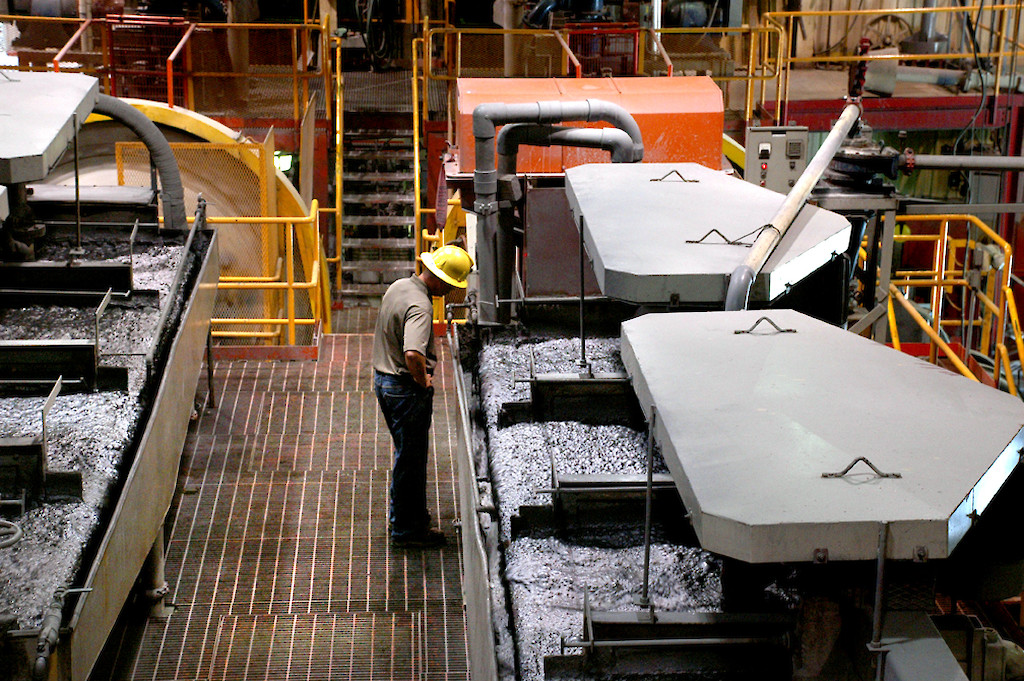Sign up for daily news updates from CleanTechnica on email. Or follow us on Google News!
Some people believe the EV revolution is over and done with. Been there, done that. People prefer conventional cars with internal combustion engines, and that’s that. While it is true that growth in EV sales has been lower than anticipated lately, the market for EVs is still growing, even if at a somewhat slower pace than EV advocates might wish for. Companies like Hyundai are not pulling in their horns and turning away from building electric cars. Quite the opposite. Both Hyundai and Kia currently offer a number of EVs that appeal to a broad spectrum of drivers, with more on the way. Does ii know something that EV antagonists don’t? It very well might.
On October 7, 2024, Goldman Sachs issued an advisory about the future of electric cars that said it expects the cost of batteries for EVs will be cut in half within two years. If true, will that reinvigorate EV sales? Assuming manufacturers pass the savings on to consumers, the answer is absolutely! The investment firm said that technology advances have allowed electric vehicle battery-makers to increase energy density. That, when combined with a drop in prices for lithium, will push battery prices lower than previously expected.
Battery Prices Are Falling
Global average battery prices declined from $153 per kilowatt-hour in 2022 to $149 in 2023 and they are projected by Goldman Sachs Research to fall to $111 by the close of this year. Its researchers forecast that average battery prices could fall towards $80/kWh by 2026, amounting to a drop of almost 50% from 2023. That is a level at which battery-electric vehicles would achieve ownership cost parity with gasoline-powered cars in the US on an unsubsidized basis, it said. We keep telling people it took over a century for the internal combustion engine to reach the state of near perfection it enjoys today. Mass market electric cars are barely a decade old. Past experience suggests improvements in battery-powered technology will be forthcoming for decades to come.
This week, Hyundai Motor Group announced it has set an ambitious goal to develop a lithium iron phosphate (LFP) battery with an energy density of 300 Wh/kg by the end of 2025. This move positions Hyundai to exceed the capacity of current Chinese-made LFP batteries by more than 15% and solidify its commitment to advancing electric vehicle technology and to overcoming market challenges.
Korean Car Blog says that it learned from industry sources on October 13th that Hyundai Motor Group is collaborating with domestic battery partners to develop ultra-high capacity LFP batteries for electric vehicles. Currently, Chinese manufacturers supply lithium iron phosphate batteries with capacities in the mid to high 200 Wh/kg range. If Hyundai is able to achieve its goal, that will give it access to the most energy-dense LFP battery cells available for its electric cars.
Originally, Hyundai planned to complete the development of its lithium iron phosphate batteries between 2023 and 2024. However, the company has revised its goal, and is now aiming to finalize the development of 300 Wh/kg LFP batteries by 2025. Hyundai Motor Group is directly involved in the battery design, while its partners handle the development process.
Batteries For Mid-Priced EVs
The newly developed lithium iron phosphate batteries are expected to be installed in mid- to low-cost small electric vehicles that typically rely on nickel cobalt manganese batteries today. This strategy aims to enhance the technology of entry level EVs and address the “electric vehicle chasm” — the temporary slowdown in demand within the EV market.
Currently, Chinese companies such as CATL and BYD are the dominant suppliers of LFP batteries with about 90% of the market. LFP batteries offer advantages like lower cost and higher stability compared to high performance NCM batteries. They also have a significantly lower risk of runaway thermal events, otherwise known as battery fires. Hyundai’s initiative seeks to challenge this dominance by developing superior LFP batteries domestically.
Hyundai Motor Group has created the “LFP Battery Cathode Active Material Direct Synthesis and Battery Technology Development” project in collaboration with Hyundai Steel and EcoPro BM. In this partnership:
- Hyundai Steel will develop fine iron powder processing technology using recycled iron, a primary material for LFP batteries.
- EcoPro BM will utilize this iron powder to develop Lithium Iron Phosphate cathode materials.
- Hyundai Motor will integrate these materials into its battery production.
The goal of this three way cooperation is to localize the production of LFP battery materials and reduce reliance on foreign sources.
During its Investor Day 2024 event in August, Hyundai Motor Group unveiled its mid- to long-term battery strategy that it calls “Hyundai Way.” It calls for an increase in the capacity of in-house LFP, NCM batteries, and next-generation solid-state batteries by more than 20% by 2030. This strategy underscores Hyundai’s commitment to enhancing its battery development capabilities and securing a leading position in the EV market.
In its announcement, Hyundai Motor Group claimed its aggressive push to develop ultra-high capacity LFP batteries demonstrates its dedication to innovation and competitiveness in the electric vehicle industry. By collaborating with domestic partners and focusing on material localization, Hyundai aims to avoid the dominance of Chinese manufacturers in the LFP battery market and provide advanced battery solutions for entry level electric vehicles.
The Takeaway
That last sentence really captures the heart of the matter. The auto industry would dearly love to break the stranglehold Chinese companies have on battery production worldwide, believing that doing so will allow them to lower costs, which in turn will help them bring less expensive electric vehicles to market. It’s not that CATL and BYD haven’t been lowering prices to customers, it’s that more competition would go a long way toward driving down battery costs even further.
There are two main factors associated with reducing the cost of batteries, Goldman Sachs said. One is technological innovation, with multiple new battery products being launched that feature about 30% higher energy density and lower cost. The second is a continued downward trend in lithium and cobalt prices, which account for nearly 60% of the cost of batteries. Between 2023 and 2030, it anticipates that about 40% of the decline in battery prices will come from lower commodity costs.
The good news is that innovations in battery technology are continuing to happen. As we often say, the batteries that will power our vehicles in 2030 have yet to be invented. EVs are still new technology and the best is yet to come. The naysayers who are dancing on the grave of the EV revolution today are going to be mighty disappointed in a few years when electric cars become the preferred choice of the majority of motorists. Of all the current automakers, Hyundai seems to be making the right moves now that will allow it to be a leader in electric vehicles in the future.

Have a tip for CleanTechnica? Want to advertise? Want to suggest a guest for our CleanTech Talk podcast? Contact us here.
Latest CleanTechnica.TV Videos
CleanTechnica uses affiliate links. See our policy here.
CleanTechnica’s Comment Policy





